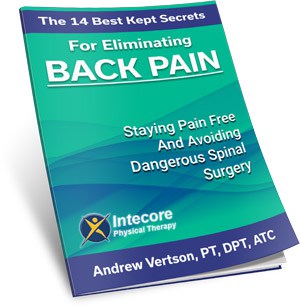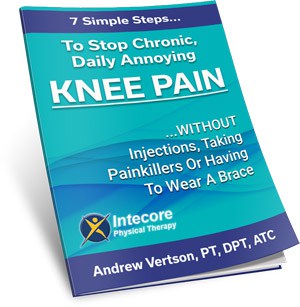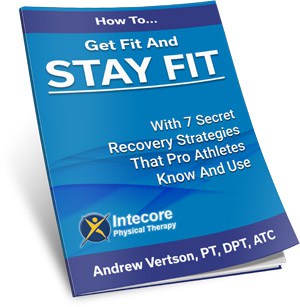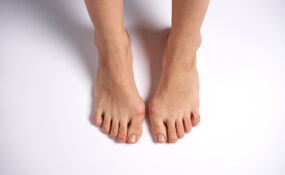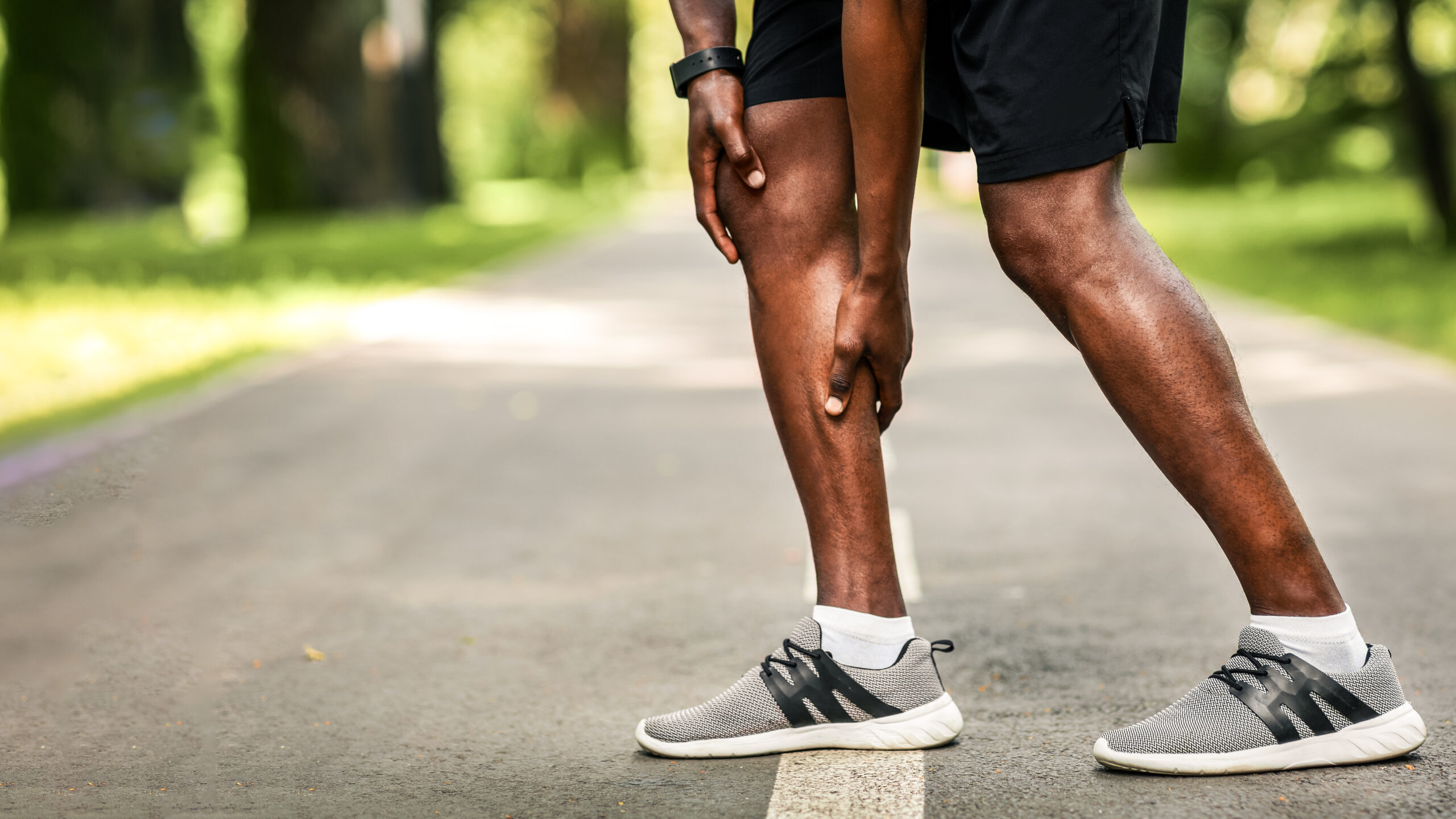
Ever start a new walking or running routine, only to get sidelined by aching pain in your shins? You’re not alone—and you’re probably dealing with shin splints.
The pain can be intense. It’s that throbbing or aching feeling along the shinbone that shows up mid-run or after long walks and doesn’t go away easily.
The upside? With a few adjustments—like the right shoes, smart training habits, and a few key exercises—you can avoid shin splints altogether. As a physical therapist, I help people manage and prevent shin splints all the time. In this article, we’ll break down exactly what causes shin splints and how to avoid them when running or walking, so you can stay consistent, stay moving, and stay injury-free!
More Posts Like This From Intecore Physical Therapy:
Beach Running 101: 7 Tips for a Safe and Effective Workout
5 Reasons Why Prioritizing Movement Over Diets and Workouts Leads to Long-Term Health
What Causes Shin Splints?
To prevent shin splints, you need to understand what’s causing them in the first place. And while the pain shows up in your shins, the actual problem often starts with training habits, footwear, or how your body moves.
Let’s break down the most common culprits:
1. Doing Too Much, Too Soon
This is one of the biggest reasons shin splints happen—especially if you’re new to running or walking, or coming back after some time off. Suddenly increasing your distance, speed, or number of workouts each week doesn’t give your muscles and bones enough time to adapt. That repetitive stress leads to irritation in the tissues around your shinbone.
2. Worn-Out or Unsupportive Shoes
Your shoes are your foundation. If they don’t have enough cushioning, arch support, or shock absorption, your lower legs take the hit. Even if your shoes feel fine, most lose their support after about 300–500 miles. Continuing to run or walk in them can set you up for overuse injuries like shin splints.
3. Hard or Uneven Surfaces
Running or walking regularly on concrete, slanted sidewalks, or uneven trails increases the impact on your legs—and your shins bear a lot of that stress. Downhill running can also be tough on the lower legs, especially if your muscles aren’t strong enough to control the motion.
4. Muscle Imbalances and Poor Movement Patterns
Weak or tight muscles, especially in the calves, hips, and ankles, can change how your body absorbs impact. If your form is off—like overstriding or collapsing at the arch—it creates more work for your lower legs with every step.
A gait analysis with a physical therapist can reveal whether your body mechanics are increasing your risk for shin splints.
5. Skipping Warm-Ups and Cool-Downs
Going from zero to full speed without properly warming up puts your tissues at greater risk. Similarly, skipping cool-down stretches can lead to tight, overworked muscles that stay inflamed longer.
How Can I Prevent Shin Splints?
Now that we know what causes shin splints, let’s talk about how to stop them from happening in the first place.
1. Increase Mileage and Intensity Gradually
Sudden changes in how much or how hard you’re running or walking is a fast track to shin splints. Instead:
- Follow the 10% rule: Increase your weekly distance or time by no more than 10% at a time.
- Alternate harder days with easier ones, especially if you’re just starting out or getting back into a routine.
- Give your body time to adapt. Muscles and bones both need time to strengthen in response to repeated impact.
2. Wear the Right Shoes (and Replace Them Often)
Your shoes play a huge role in how forces travel through your legs. If they don’t provide enough support or cushioning, your shins can take the brunt of it.
- Look for shoes designed for your activity and foot type—whether you’re flat-footed, high-arched, or somewhere in between.
- Replace running or walking shoes every 300–500 miles, or sooner if you notice a breakdown in cushioning.
- Consider getting a gait analysis at a running store or through a physical therapist for personalized shoe recommendations.
3. Choose Softer, More Stable Surfaces
Whenever possible, avoid always running or walking on hard concrete.
- Mix in surfaces like dirt trails, grass, or rubberized tracks to reduce the repetitive impact on your legs.
- Be mindful of sloped or uneven surfaces—they can subtly change your gait and overload one leg more than the other.
4. Don’t Skip Rest Days
- Include at least one or two rest days per week, especially when building up your activity level.
- Use rest days for cross-training (like swimming, cycling, or yoga) to give your shins a break from pounding the pavement while staying active.
5. Add Strength Training to Your Routine
Weak or underused muscles (especially in the hips, calves, and core) can shift extra workload to your shins.
- Two days a week of strength training focused on the lower body and core can help balance out your movement patterns.
Should I Change the Way I Run or Walk to Avoid Shin Splints?
Your running or walking technique can either protect your lower legs or contribute to the repetitive stress that leads to pain in your shins.
Let’s start with one of the most common issues:
Over-striding
When your foot lands too far in front of your body—especially with a straight leg—you’re over-striding. It creates a braking effect with every step and increases the load through your shins. Instead, aim for your foot to land closer to your center of mass (right under your hips). This encourages a smoother, more efficient stride with less impact force on the lower legs.
Heel Striking
Some heel strike is natural, especially when walking. But when you’re running and landing heavily on your heel with a stiff leg, it sends a sharp jolt up the chain. If you hear a loud “slap” sound with each step or feel jarring impact, that’s a clue your mechanics might be contributing to shin splints. A softer, more midfoot landing can reduce the stress on your shins.
Get a Gait Analysis (Seriously, It’s Worth It)
Even small technique issues—like foot placement, pelvic drop, or asymmetrical stride—can contribute to shin pain over time. A gait analysis with a physical therapist can identify exactly what’s going on in your movement pattern. We’ll look at how your body moves through each phase of the stride, how your joints absorb impact, and whether muscle imbalances are altering your gait.
With that information, we can create a personalized plan that includes technique drills, strength work, and mobility exercises—so you don’t just feel better, you move better. Click here to find out how we can help you.
When Should I See a Physical Therapist for Shin Splints?
Some soreness after a long walk or run isn’t unusual. But if keeps coming back, or turns into a sharp, lingering pain that doesn’t go away with rest—that’s your sign to get it checked out.
Here’s when it’s time to bring in a physical therapist:
1. When Rest Isn’t Solving the Problem
If you’ve backed off your training, iced, stretched, and still feel pain when you try to get back to walking or running, there may be a deeper issue at play. A PT can assess for underlying movement dysfunction, muscle imbalance, or biomechanical stress that keeps irritating the same spot over and over.
2. When Symptoms Keep Coming Back
Maybe the pain fades for a week or two—but the moment you pick up your routine again, it flares right back up. That’s a classic sign that your body isn’t adapting well to repetitive stress. A physical therapist will look at your movement patterns, strength, flexibility, and alignment to find and fix what’s not working efficiently.
3. To Rule Out Something More Serious
Sometimes what feels like shin splints might actually be something more serious. Physical therapists are trained to differentiate between types of lower leg pain, and we’ll refer you for further imaging or testing if needed.
The earlier you get assessed, the easier it is to treat. And the goal isn’t just pain relief—it’s to keep you walking, running, and moving confidently without setbacks!
If you need some help, give us a call here: 949-570-9549 or, click here to fill out our quick inquiry form to return to life pain-free!
FAQs
How do you relieve shin splints?
Start with rest, ice, and elevation to calm the inflammation. Then focus on gentle stretching, proper footwear, and low-impact cross-training.
What are 3 signs or symptoms of shin splints?
1. A dull, aching pain along the front or inside of your lower leg
2. Pain that worsens with activity—especially running or walking
3. Tenderness or mild swelling along the shinbone
How long do shin splints last?
With early treatment and rest, most cases improve within 1 to 3 weeks. Ongoing or recurring symptoms may take longer and often need guided rehab to fully resolve.
- 7 Ways to Get Rid of Tension Headaches Naturally - July 1, 2025
- Why Are My Feet Swollen? Common Causes Explained - June 2, 2025
- What Is Restless Leg Syndrome? Symptoms, Causes, and Relief Options - May 5, 2025





